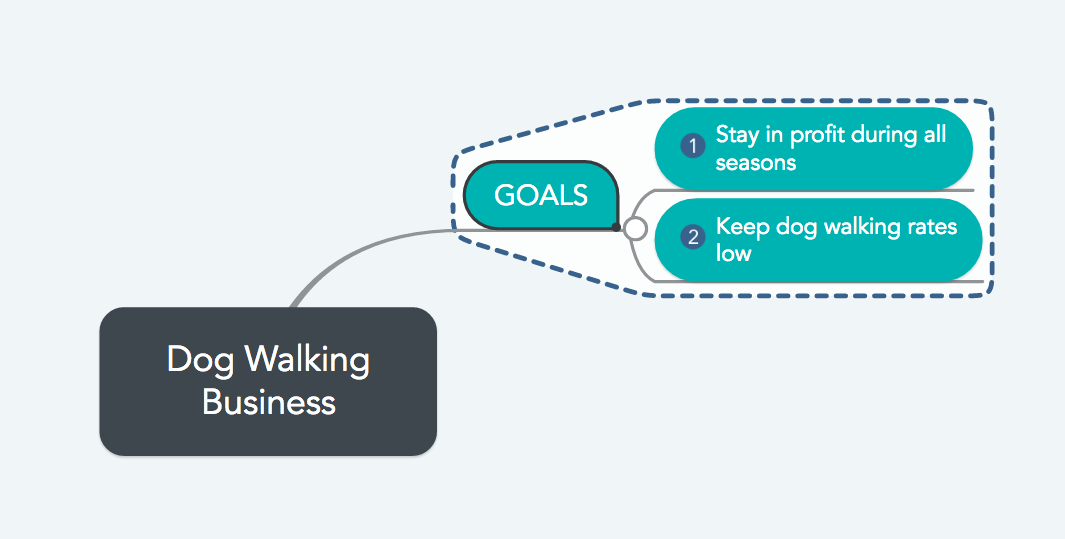Problems are an inseparable aspect of our lives and business relations. If you want to start a business, you’ll inevitably run into several complex problems, such as: How do you found a profitable company, how do you make it stand out among the competition, how do you attract more customers, and how do you maintain and boost its reputation? In this article we’ll provide you with a step-by-step guide to problem solving with mind maps, a simple but powerful technique that’s already used by millions of entrepreneurs and other professionals across the globe.

Problem Solving with Mind Maps – a Step-by-Step Guide for Entrepreneurs
Einstein nailed the definition of problem solving. He said, “The formulation of the problem is often more essential than its solution, which may be merely a matter of mathematical or experimental skill.”
A confident problem solver understands the problem, defines its various aspects, generates ideas and is able to turn those ideas into a solution. Mind mapping is a proven method that helps people surpass the initial chaos that occurs in the mind when the problem arises. Visualizing your goals, problems, ideas and potential action points in a mind map can help you see the bigger picture and make out connections between individual aspects that you might have missed otherwise. Seeing your whole business model mapped out like this also helps your brain form new ideas through association, and it is those ideas that path the way to the solution of your problem.
To illustrate the effectiveness of problem solving with mind maps, we’ll use a simple example of a young entrepreneur who wants to start their own dog walking business. Following this step-by-step guide, you’ll be able to visualize even complex problems and develop actionable solutions for them.
Start with the Goals, then Formulate the Problems
Remember Einstein’s quote? We have to understand the problem before we can think of finding solutions. That’s the step you start with.
Step 1: Choose your preferred mind-mapping software and open a blank mind map. Write your business idea in the center of the map and create a branch for your business goals. Create a new topic for each individual goal.
The founder of our dog walking business has two main goals: staying in profit during all seasons while keeping dog walking rates low in order to stay competitive. Unfortunately, the distance between pick-up points and dog parks is so great that all dog walkers will need cars to get around. This in turn creates three major problems:
Some employees don’t have driving licenses; there are not enough vehicles for all employees; and having each dog walker drive back and forth between pick-ups and parks will lead to enormous gas expenses.
Step 2: Create a second branch for your problems and write them down individually.
Brainstorming Ideas to Find Solutions
Once you have the goals and problems visualized in your mind map, it will be easier for you to get ideas on possible solutions. Take each problem and simply write down whatever solution comes to your mind. Don’t worry if some of your ideas are far fetched or even impossible – the goal is to get your creative juices flowing. Ideas that turn out to be unfeasible can simply be deleted from the map when your brainstorming session is over.
Step 3: Take the first problem on your list and start brainstorming possible solutions. Don’t censor yourself at first, just write down what comes to mind. Focus on this particular problem only, if you try to solve all problems at once you’ll simply get overwhelmed.
For the problem “not enough vehicles for all employees”, our entrepreneur soon realizes that there is actually a very simple solution: dog walkers who work in the same area can share a car. He creates a third branch in the mind map for ‘Solutions’ and draws a line to connect the problem with its respective solution.
Suddenly, our entrepreneur sees that this idea will actually help with those big gas expenses too, so he connects it with this problem through another line. And what about the third problem? If employees share cars, only a few of them will need driving licenses, so this is another issue he can check off the list. Three birds, one stone.
At this point, our entrepreneur realizes that letting dog walkers use regular cars will not work if multiple people and dogs have to be transported at the same time. To have enough space for everyone, he will need to purchase a few big vans for his business. This is big investment at first, but it’s one that will pay off in the long run. And with this, he has found his first action point.
Let’s revisit our goals: By having the dog walkers share vans the entrepreneur is able to keep costs low and thus offer similarly low rates to his customers. In order to build a large customer base and stay in business during all seasons, the entrepreneur can add additional action items such as “Create a strong marketing strategy” and related points such as ‘Create social media profiles’, ‘Learn how to maintain a successful blog‘ and so on.
Step 4: Outline clear action points based on the solutions you have developed.
Just like the entrepreneur in this example, you can benefit greatly from creating a mind map to visualize your business and find solutions to whatever problems stand between you and your goals.
Extra Tips on Problem Solving with Mind Maps
- You can share your mind map with your business partners or team members to collaborate on it and brainstorm solutions together. Such virtual brainstorming sessions have been shown to be highly effective compared to traditional, in-person sessions.
- MindMeister allows you to add due dates to the action points in your mind map, or even turn them into full-fledged tasks. As soon as you’re finished mapping out your business plan, you can export those tasks to a project board and start getting productive.
- Don’t forget to update the mind map with new ideas, problems, and possible solutions as you make progress with the actions. The best aspect of online mind mapping is its flexibility; you can always add new points and get rid of the ones you no longer need.
Remember: every problem has a solution. Life would be so boring without the problem-solving challenges we face every single day. Thanks to mind maps, that aspect of our daily routine becomes much easier.






